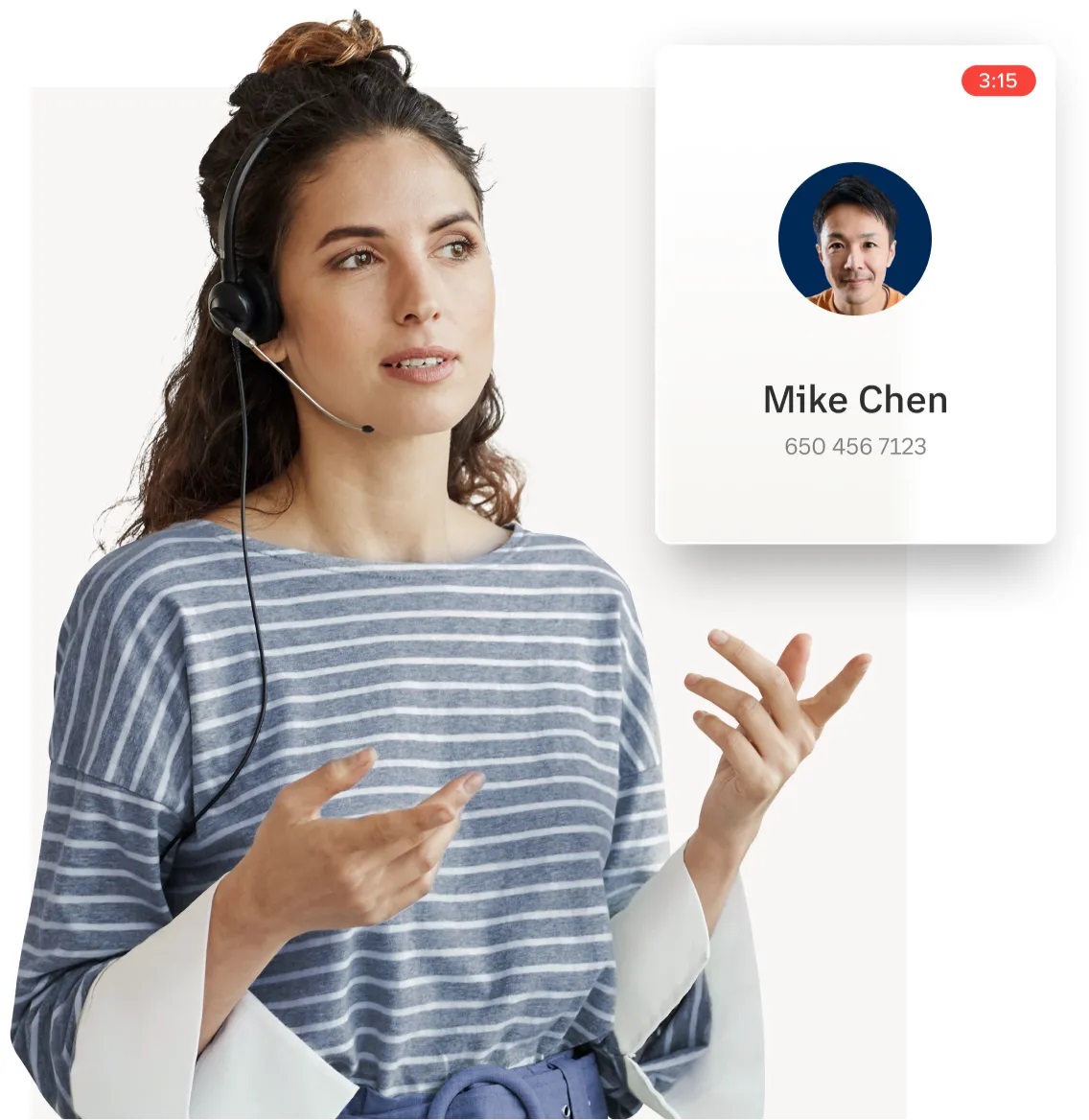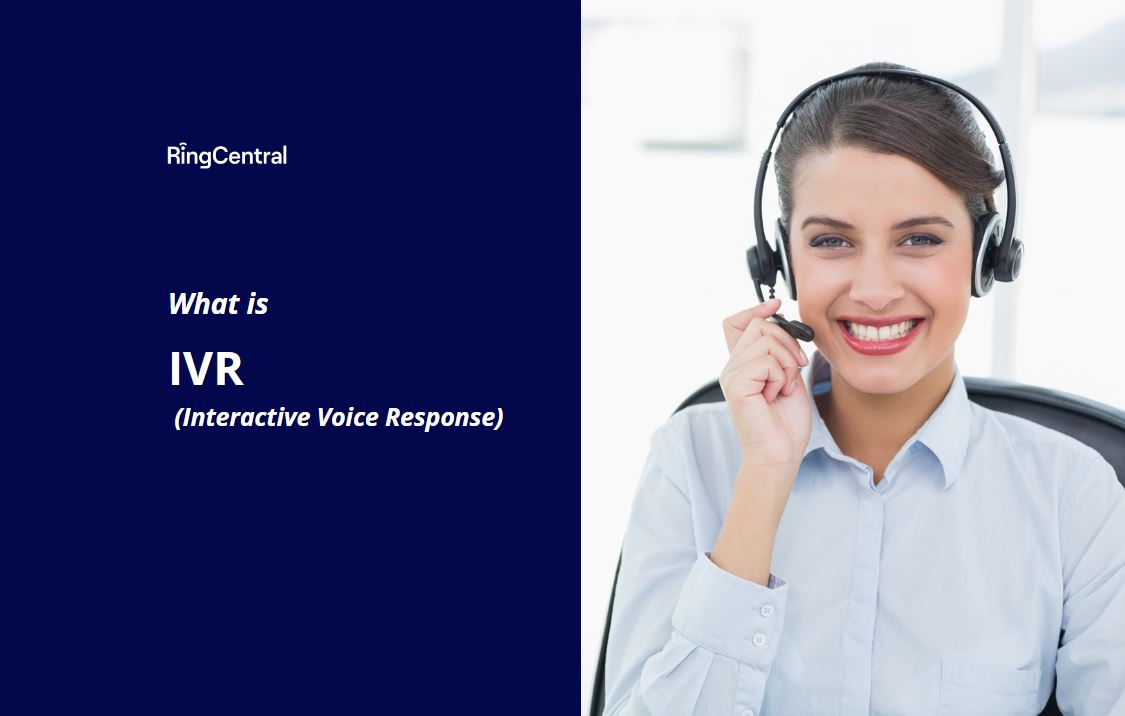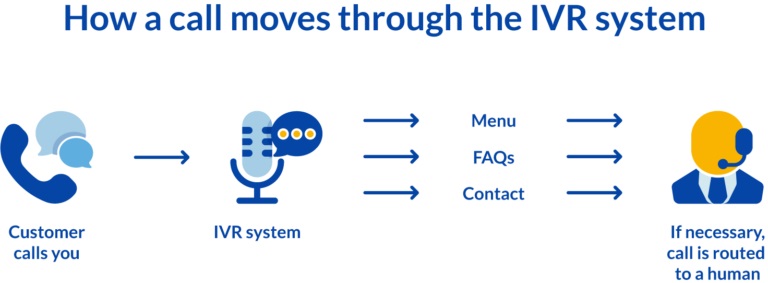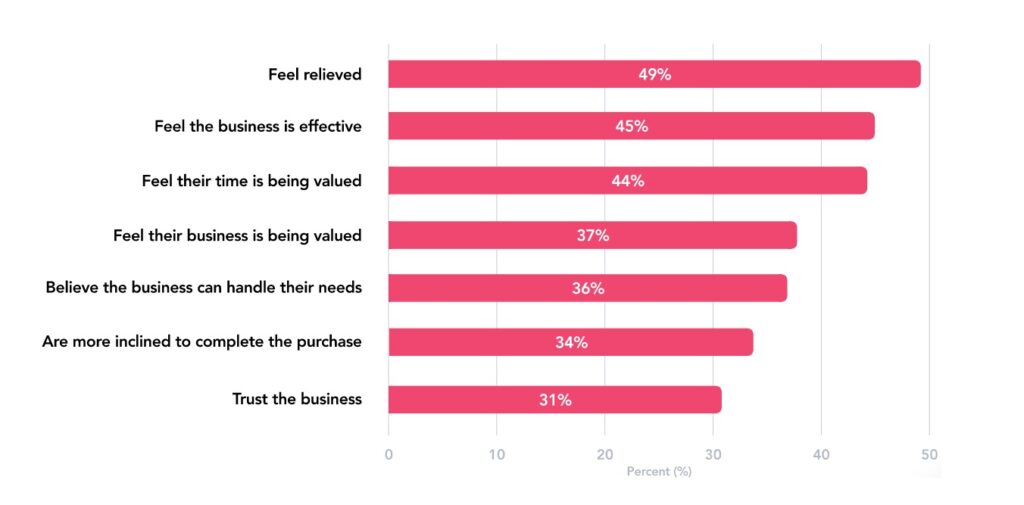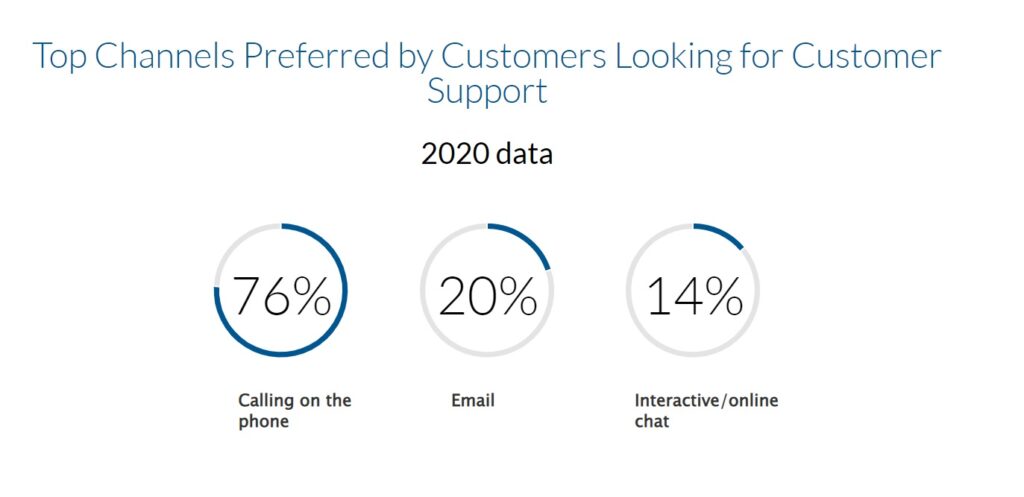Exploring What IVR (Interactive Voice Response) Is – A Beginner’s Guide
In this article, we will cover:
- What is IVR?
- How does IVR work?
- IVR usages
- Common types of IVR systems
- IVR Challenges
- Benefits of IVR
- Important features to integrate on IVR
76% of customers still look to resolve their issues via phone. So, managing call flows is vital for businesses to deliver better customer experiences and boost satisfaction.
An interactive voice response system (IVR) does just that by analysing and transferring incoming calls to the correct department or agent. It provides businesses with crucial features to promptly handle customer needs through prerecorded messages and information
In this guide, we’ll go over what IVR is, how it works, and how it can help your business provide better customer service.
What is IVR?
IVR is an automated interactive voice response system handling inbound calls for businesses. It’s a form of computer telephone integration (CTI) and organises initial customer interactions when calling a company or contact centre.
It provides customers with self-service functionality to access the information they require without talking or explaining the issue in detail to a human operator first.
For example, if you call customer support, you may hear a prerecorded voice providing menu options, prompting you to press a number on your keypad or say one of the options. It provides the required information or transfers your phone call to a call centre agent.
IVR technology improves the customer experience by routing customer calls to the best department or agent to deal with their issue. As well as driving agent productivity, it increases first call resolutions (FCR), lowers waiting times, and reduces operational costs for businesses.
How does IVR work?
IVR technology connects your phone system to a computer through a telephony board/card and IVR software.
Basic IVR systems use dual-tone multi-frequency (DTMF) signals, and it’s a common way for computers and phones to communicate. Each number key on a keypad emits a distinct tone, which maps to a specific action, and the computer interprets it.
For instance, an IVR menu might list option three as connecting to a human employee. Pressing the corresponding number transfers the incoming call to a live agent.
More advanced systems replace this simple yet robust DTMF method with speech recognition, where callers give simple voice commands or list their issues. Speech recognition software analyses the responses and routes calls appropriately.
Most modern IVR phone systems use VoiceXML programming languages and typically consist of three main components.
- TCP/IP Network: provides internet and intranet connectivity
- Databases: supply IVR applications with real-time and relevant data
- A web application/server: hosts IVR software applications. A web server will often host multiple applications, such as outbound call software or speech-to-text transcription.
You can invest in the hardware and software required to run an IVR system. However, IVR service providers, like RingCentral, can be a cheaper option to host your IVR solution, eliminating the need for costly hardware and future upgrades. These plans often run as monthly subscriptions and have a range of features to help you take care of the customer.
Additionally, call centre software generally includes IVR and critical features such as recorded messages, IVR menus, and text-to-speech.
IVR uses
IVR systems have uses other than call centres and can provide crucial automation of calls for small businesses to respond to incoming calls outside of business hours. Some uses are below.
1. Verification
Before connecting callers to a service or support agent, IVR can ask for personal verification, such as verifying account details, to streamline workflow and check identities.
2. Transaction
Transactional IVR is often used with banks and includes making payments, transferring funds, checking account balances, and updating account details or customer information, like phone numbers or addresses.
3. Booking
Customers can make, confirm, or change bookings automatically, without the need for live support agents. It enables customer service to be available 24/7 and boosts business workflows.
4. Information
IVR can provide information quickly to customers with text-to-speech software and prerecorded messages. This includes information such as flight schedules, timetables, opening times, and movie screenings.
5. Reminders
IVR menus can schedule appointments, make reservations, and provide reminders or notifications. They reduce no-shows, boost customer service capability, and make it easy for customers to cancel appointments without feeling guilty.
6. Marketing
An IVR system can automate phone surveys, polls, the redemption of special offers, and competition entry. It means marketers aren’t wasting time conducting repetitive tasks and can boost their efficiency.
Common types of IVR systems
There are three types of IVR systems that a business might consider using. Each one differs in its user interface.
-
Touch-tone
Touch-tone was the first implementation of IVR and is the most basic system. It uses DTMF and prompts users to make keypad selections to access the information they need. For instance, a recording might say, ‘Press two for product returns.’ The caller can press two to start the returns process.
-
Directed dialogue
Directed dialogue uses verbal prompts and simple speech recognition to handle customer calls. For instance, an IVR recording might ask, ‘Do you want to return or exchange an item?’. If the caller responds by saying ‘Return.’ they’ll be guided through the returns process.
-
Natural language
Natural language is the most advanced IVR system and uses speech recognition to respond to user requests. For instance, a recording might ask, ‘What do you want help with today?’. The caller can respond with, ‘I’d like to return a product.’, and they are assisted through a returns process.
IVR Challenges
Before we go through the advantages businesses get from IVR systems, let’s look at the challenges that can trip you up.
1. Complex system navigation
IVR technology can streamline call flows, but it requires well-constructed menus and navigation to be successful. Long recorded messages with too many options waste caller time and cause frustration, leading to low customer satisfaction and churn.
2. Poor quality voice prompts
Using cheap text-to-voice systems or recording messages without professional equipment and talent leads to difficulty understanding voice prompts and confusion for your callers.
3. Long wait times
If you have high call volumes, your callers may regularly face long hold times to reach the right agent or department. Using features like callback functionality lets you reschedule calls and get back in touch with a caller when an agent frees up, improving customer satisfaction.
4. Understaffed
While IVR is there to improve FCR and reduce call volumes, you must be well-staffed to attend to atypical customer needs, complex issues, or customers who don’t like automated systems. IVR is designed to work with live agents, not replace them.
Benefits of IVR
1. Cost and time efficient
Answering phone calls takes up valuable employee time, despite most queries being undemanding, such as queries about opening hours or common support questions. IVR lets your staff focus on complex customer issues and atypical calls, reducing costs and wasted time.
2. Boosts productivity
IVR systems route calls to the appropriate department by gathering relevant information from callers. It reduces wait times, improves FCRs, and drives agent productivity.
3. 24/7 availability
Prerecorded messages and basic information provide your callers with 24/7 customer service, driving satisfaction and reducing churn.
4. Strengthens security
With advancements in voice recognition, IVR can verify the identity of individuals, strengthening security. It can be vital for transferring funds or checking sensitive or personal information.
5. Minimises errors
High call volumes can cause human operators to misroute or drop calls, impacting your customer experience. With IVR, this can be greatly reduced.
6. High chance of lead conversion
By answering every inbound call, providing relevant information, or transferring it to the best destination, you can reduce call abandonment, increasing the chances of converting potential leads.
7. Improves customer service management
IVR attends to customer needs immediately, boosting company perception and providing reliable customer support and self-service. It reduces wait times, increases FCRs, and guides customers to resolve their issues, improving your customer service management and reducing costs.
Important features to integrate on IVR
An IVR system creates a better experience for your customers and makes them feel well-treated. These features can help improve your customer service further using IVR.
-
Operation hours routing
Intelligently routing calls and giving customers different options based on business hours allows for greater customer-service flexibility, for example, providing the option to record voicemails outside operating hours.
-
Automatic call distribution (ACD)
ACD is a telephony device directing calls to agents or departments without an operator.
-
Call routing
Call routing is a call management feature to assign calls to an appropriate agent/department based on specific rules or criteria. The most common are time-based, skill-based, and round-robin routing.
-
Call queues
Call queues are virtual waiting rooms used when the required agent/department is busy with another caller.
-
Callback number
When no agents are available to answer a call, IVR can record customer phone numbers and their place in the queue to schedule a callback or have the agent call once they’re free.
-
Post-surveys
After interacting with the IVR or an agent, customers are transferred to an audio-based survey to assess performances and gather valuable feedback.
How RingCentral can help
An effective IVR is crucial for responding to customers promptly and ensuring you provide a full range of support features. It can streamline your workflow, communications, and improve business perception.
So, it’s vital to choose the right IVR solution and provider to meet your needs and help you achieve your customer service goals. That’s where RingCentral can help.
RingCentral provides a comprehensive set of calling features to improve your IVR system, including real-time dashboards, data-driven routing, voicemails, and access to customer surveys.
With a range of pricing options, omnichannel capabilities, and integrations, RingCentral is a cost-effective option that guarantees your ability to support your customers, delivers excellent experiences, and boosts caller satisfaction.
Originally published Jul 28, 2022, updated Aug 25, 2022
